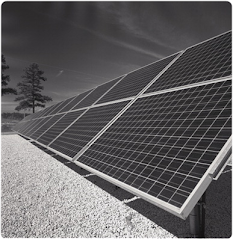









And...a search on 'Solar Therapy' turns the following medicalish definition:
Treatment of disease by exposure to sunlight.


'Your body makes vitamin D when you are exposed to the ultraviolet B (UVB) rays in sunlight.
The amount of exposure depends on the time of the year. In the northern hemisphere, the UVB is more intense during the summer months and less intense during the winter months. In fact, if you live north of the 42-degrees latitude, you will have a difficult time getting enough vitamin D from the sun from November through February. If you live north of a line drawn on a map from the northern border of California to Boston, Massachusetts, you will probably need additional vitamin D from the foods you eat during the winter.
Vitamin D is necessary for absorption and utilization of calcium, so you need adequate amounts of vitamin D for healthy bones.






















Two proposed forms of space craft propulsion use solar wind: magnetic sail, and electrical solar wind sail. Solar sails have been successfully tested in vaccum environment by NASA.
Space Based Solar Power is very interesting. The idea is that arrays in space broadcast collected power to the Earth's surface. Technically we are not there yet, but check out this Japanese project.
Anyway, here are some basic + and - for SBSP direct from http://spacesolarpower.wordpress.com/about/
'There are three basic reasons why going to space is preferred to ground-based solar power. First, the sun is many times more intense on orbit than on the surface of the Earth. This means there is more energy to be collected. Second, unlike ground-based solar power systems which spend roughly half of their time in the darkness of night, space-based systems can be perpetually bathed in sunlight. This is an instant doubling of efficiency. Finally, ground-based systems suffer from weather phenomena such as clouds, precipitation, and dust. These are not worries in space.
Space-based solar power also has three major drawbacks. First, despite fifty years of spacefaring experience, getting to space is still hard and expensive. It costs thousands of dollars per pound to lift anything into space from Earth. Second, we have no experience assembling and sustaining objects on orbit of the scale that space-based solar power will require. Some designs suggest systems that are literally several square kilometers in size. Finally, although the efficiencies of collecting power on orbit are many times greater than what can be done on the surface of the Earth, there are significant power losses in converting raw solar energy into electricity to feed a broadcast system on orbit, during transmission to Earth receivers, and from the receiver into terrestrial power grids. Some calculations suggest space solar power can deliver only ten percent of the original collected power.'
In summary for this post...space is the place and solar is the solution.



It is presumed that at "peak sun", 1000 W/m² of power reaches the surface of the earth. One hour of full sun provides 1000 Wh per m² = 1 kWh/m² - representing the solar energy received in one hour on a cloudless summer day on a one-square meter surface directed towards the sun. To put this in some other perspective, the United States Department of Energy indicates the amount of solar energy that hits the surface of the earth every +/- hour is greater than the total amount of energy that the entire human population requires in a year. Another perspective is that roughly 100 miles square of solar panels placed in the southwestern U.S. could power the country.
The daily average of Peak Sun Hours, based on either full year statistics, or average worst month of the year statistics, for example, is used for calculation purposes in the design of the system.





.axd.png)